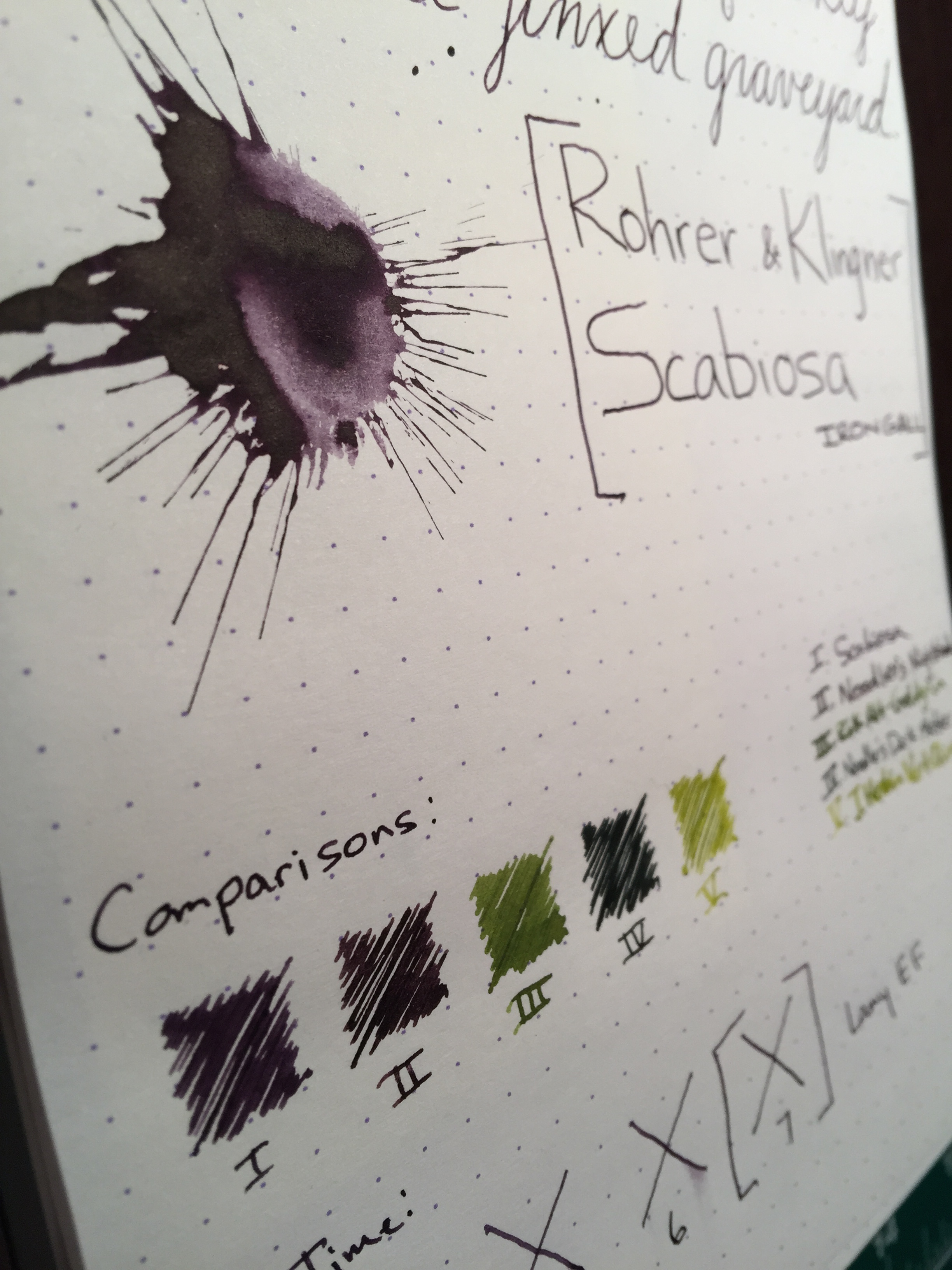Ink Review: KWZI Iron Gall Green Gold
KWZI Iron Gall Green Gold
Pen: Kaweco BRASS Sport (F)
Paper: Rhodia Dotpad 80gsm
Shading: low to moderate
Saturation: high
Flow: medium wet
Dry Time: 11 seconds
(*edit* I originally assumed Dav was a man but she very sweetly pointed out her gender to me when we spoke today. Thankfully she was more than forgiving of my mistake!)
KWZI was an ink brand that I'd not heard of yet until a friend told me about the website Ink by the Ml. If you've not heard of this site, please, take a moment and go check it out, I'll wait. Done? Awesome (you're welcome)! Dav is the woman behind the amazing site that offers samples from not-so-common (at least if you're in the US like myself) inks from around the world, and is a pleasure to deal with. Highly recommended! I immediately found several samples that I wanted to try, a few of which were from the KWZI brand.
KWZI is developed in Poland by a fellow named Konrad. He is a chemistry graduate and fountain pen user who'd been making inks for himself since 2012 - he wanted to increase the saturation of one of the inks, and his research eventually led to him developing his own line of inks for the public. His line features some of the most amazing colors I've seen. KWZI features colors that you just can't find elsewhere, some of which are Iron Gall that stray from the typical blue-black or Diamine Registrar's, or the blue or purple of Rohrer & Klingner.
I love the color green, and have found that I have a fascination with iron gall inks. Not because of the permanent properties, but because of the roots of iron gall ink and its history in our country and the world as the ink that many historical documents were written on. KWZI IG Green Gold is quite unique. The first thing you'll notice is that the ink is a very bright green when first laid down on the page - I liken it to Iroshizuku Chiku-rin. Immediately after you start writing, though, it will begin to oxidize before your eyes and turn a deep golden green color. It's amazing how fast the color changes. Before you can write out an entire sentence, the first words are starting to darken. This is starkly different than other iron galls I've used, (Registrar's & the R&Ks) as those don't darken nearly as much and do so over a much longer period of time.
IG Green Gold immediately after swabbing
Aside from the things that make it unique, IG Green Gold is a very nice, well-behaved ink. I find it to flow very nicely, and it doesn't feather at all on typical fountain-pen paper. It is highly saturated, so shading is only moderate at best, depending on how wet your pen writes. If you notice on my written review, my pen (a Kaweco with a less than desirable feed) was writing very dry until I did the ink splatter, so you can see a difference in the way a pen will write being dry vs. wet with this ink. Unintended, but it worked out! The ink has a fairly lengthy dry time at 18 seconds, though it was with a wetter writing nib that had been recently "primed."
The ink doesn't really compare to anything I've seen yet - hence why KWZI is such a draw to folks; but here are a few that are somewhat close. I find Diamine Safari is decently close, though not really comparable. KWZI's Green Gold (non-iron gall) is close, but still quite different.
Notice how much darker the swab is now
Chromatography shows only greenish-blue, yellow and the faintest hint of grey. I'm curious as to whether that grey is due to the iron gall property, though I can't be certain. I let this one soak a bit too long so the greenish-blue is almost gone, but hopefully you'll get the gist.
Being an iron gall, I know you'll be wondering about ease of cleaning. I've had the ink in my pen for a little over a week now, and just flushed it with no issues. I'm not one to keep an ink in my pen for months, so I caution you to practice good pen maintenance with any iron gall ink that you use. I find them to be stubborn but not impossible even when I've left it in for a few weeks.
I highly recommend you check out KWZI if you can. The line has some great variety of color, with lots of uniqueness. Also check out Ink by the Ml - not affiliated with either, just a happy customer.
Thanks for reading!
Lori
















